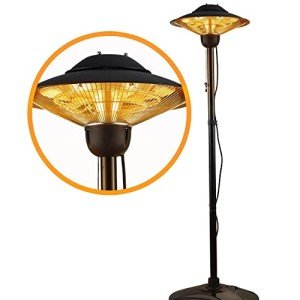How to Choose a Patio Heat Lamp Electric
There are many options available when you want to heat your patio. Electric heaters are more efficient than propane models which require refueling. They can be heated in a matter of minutes by pressing a button or flicking a switch.
They also don't release gasses that could pose a health risk. Some offer adjustable heat settings for varying distances.
Heater Type
You can enjoy your outdoor living space throughout the day and throughout the year with the right patio heater. There are a variety of heaters for patios, including freestanding natural gas and propane models as well as wall- or ceiling-mounted electric radiant heaters. Your choice depends on the dimensions of your area, the existing power sources and personal preference.
The majority of patio heaters are powered by electricity or natural or liquid gas and emit heat in convection as well as radiant heating. The output of heat from patio heaters is measured in watts, which can be converted to British thermal units (BTUs), for comparison. free standing electric patio heaters have adjustable heat settings to give you more flexibility.
Patio heat lamps incorporate the use of a burner that is mounted on a pole and an open-pored screen that reflects flames and radiates heat downwards to warm people, objects and furniture. Some models have a reflector atop the burner, which can be plated with silver to decrease the amount of heat lost upwards.
Gas patio heaters are among the most popular heaters for patios. They can heat multiple tables quickly and evenly. They can be portable and run off a propane tank or plumbed into your natural gas line with the latter providing more convenience and lower installation costs but they require ongoing expenses for fuel.
Gas patio heaters are becoming increasingly popular as more homes are equipped with natural gas lines. These heaters are easy to install, however they require a gas line that's properly installed and operating to be secure. Natural gas heaters that are portable come with extension hoses to overcome this limitation, but they could be a trip risk and can create an additional fire hazard when not being used.
Safety
The majority of electric patio heaters are safe to use in enclosed areas since they allow heat to radiate outward, instead of upwards toward combustible materials like the roof. They are not designed to be used under a non-protected roof. The heater must be located at least 6" away from the ceiling, or 18" away from the adjacent wall to prevent fire hazards.
The propane and gas patio heaters can only be used in enclosed areas that are fitted with a durable cover made for outdoor use. These types of covers are usually made of fire-resistant canvas and come with a roof that can be closed. These types of patio heaters have safety concerns relating to the fumes and flames they create. They should be kept away from objects that ignite like curtains and chairs.

Follow the guidelines and safety measures of the manufacturer before installing a patio heater or heat lamp. Be sure to choose a system with UL and CSA certifications. Also, read the owner's manual thoroughly. Be extra careful with pets and children and make sure the heater is not near them when it's running. Some free-standing patio heaters, such as EUROM, have a built-in tipping safeguard that shuts down the heater if it is tipped over.
If your patio heater is connected to a natural gas line, it is recommended to examine it regularly and have it tested by a certified professional for leaks. If the line needs to be replaced, make certain to get a licensed plumber. A professional can determine whether the line is properly routed or if it should be run through an underground pipe. A professional can make sure the heater for your patio is connected into an outlet that is GFCI (ground fault circuit interrupter) rated to protect against electrical shocks and fires.
Installation
The the height at which a patio heater is placed affects how much heat it will radiate into the space. It is crucial that the heater be mounted at a safe distance from the surface such as plastic, which can deform as well as wood, which can become too hot. Depending on the heater model, you can choose to place it on a wall or a structure using standard mounting brackets. Certain models come with a soft start feature, which decreases the peak current in order to protect your circuits.
